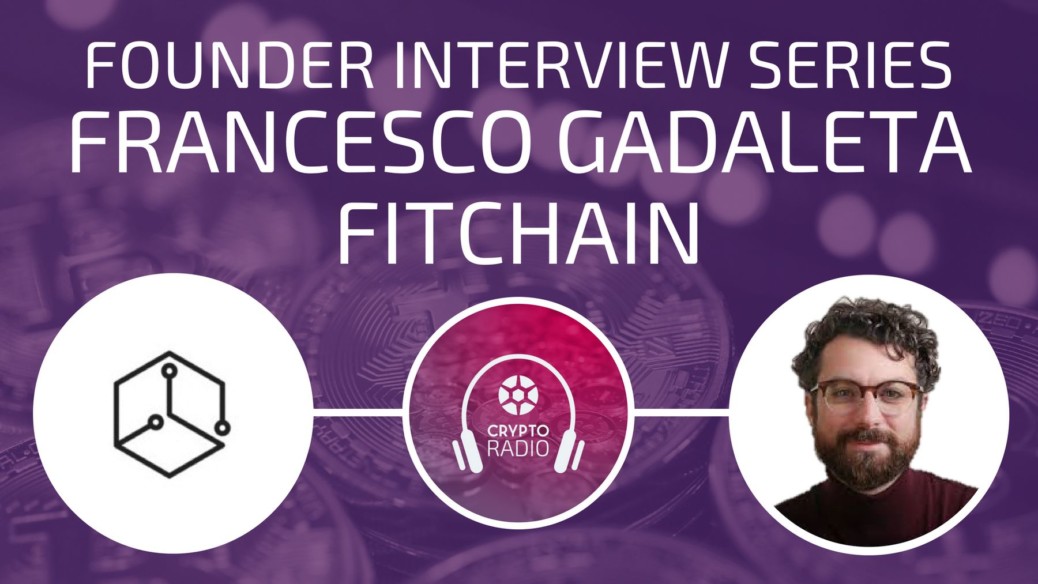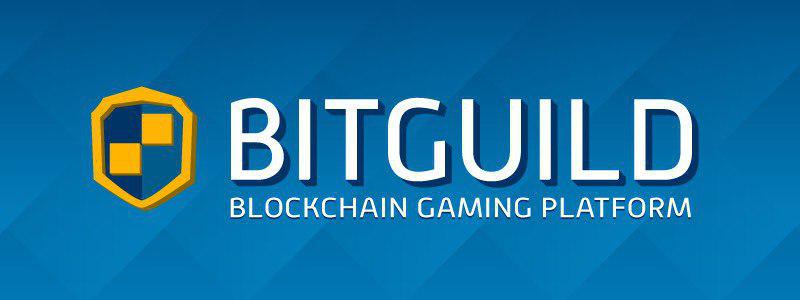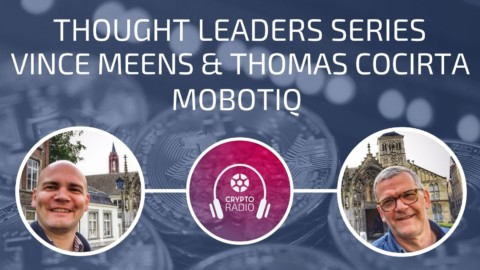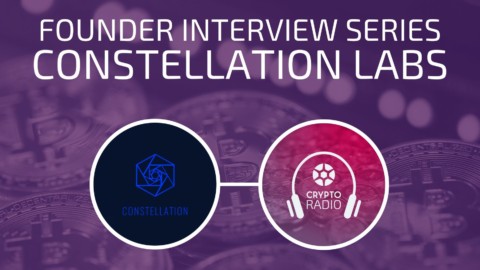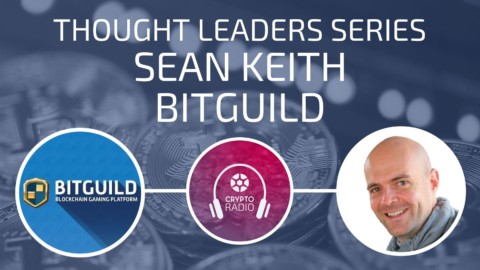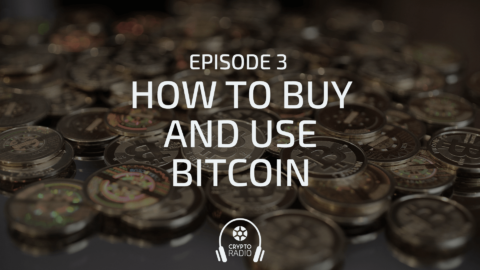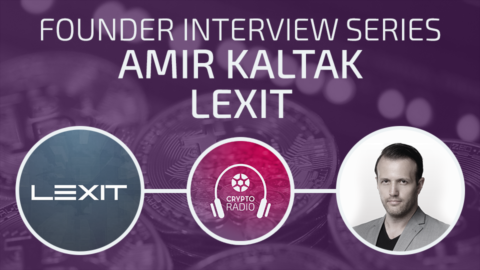Podcast: Play in new window | Download
Euvie: Hi crypto world, welcome back to the founder series. Today on the show, Chris Sparks is interviewing Francesco Gadaleta, the founder of fitchain.io and senior adviser to Abe AI. Fitchain is a decentralized machine learning platform that combines blockchain technology and AI to solve the data manipulation problem in restrictive environments such as healthcare and financial institutions. Fitchain has a partnership in place with Bitchain DB and Ocean Protocol, two of the projects that [00:00:30] we’ve recently featured on Crypto Radio. To get all the links and show notes from this episode, go to cryptoradio.io/fitchain.
This episode is brought to you buy bitguild.io. Bitguild is a new gaming platform built using blockchain technology. Their mission is to redefine the relationship between gamers and game developers. On the Bitguild platform gamers maintain full ownership and control of their virtual items, which are stored on the blockchain. They can transfer items and progress between compatible games, [00:01:00] and they can make in-game transactions safely and cheaply, and sometimes free. Developers who join the platform will get a direct link to an established player base, a strong community, and a network of likeminded developers building on the same platform.
Developers will also have the potential for direct game development funding from Bitguild. The first version of the Bitguild portal is now live. You can log in with Meta Mass, buy the Plat token, and play Bitguild’s first game, Ether Online. They now have a full inventory wallet system [00:01:30] for in-game items. In the coming weeks, the marketplace will be implemented and several independent developers are joining the site to bring their unique games to the Bitguild family. Go to cryptoradio.io/play to start playing and join the Bitguild official Discord server to connect with the team.
Mike: Welcome to Crypto Radio, we interview the top thinker and entrepreneurs in their blockchain and cryptocurrency industry. We also cover topics like trading, investing, and ICOs. We’re your hosts Mike Gilliland, [00:02:00] Michael Paul, Chris Sparks, and Euvie Ivanova. We’re entrepreneurs, crypto investors, and co-founders of a new blockchain investment platform called cosyndicate.io. We created Cosyndicate and Crypto Radio to make crypto investing a better experience for you.
If you’re new to the show and you’d like a list of our top episodes and resources, go to cryptoradio.io/start. If you like our podcast, you can subscribe, share, and follow us on social media, and leave us a rating and review on iTunes and elsewhere. It helps others find the show and we really appreciate it. You can find all those [00:02:30] links at cryptoradio.io/start.
Chris: Okay, Francesco, how’s it going today?
Francesco: Hey Christopher, how are you doing? I’m very well, thanks.
Chris: Francesco is from fitchain.io. Francesco, go ahead and hit us with your elevator pitch.
Francesco: Yeah, sure. Fitchain.io is a platform that allows data scientists to write machine learning models on data they cannot see. It’s indicated for organizations, what we call the data [00:03:00] owners, that are basically highly regulated environments and that cannot share their data. In this relationship between data owners/organizations and data scientists, of course, they are dealing with non-trustworthy environments, nobody can trust anyone and that’s why we leverage blockchain technology to keep the process consistent in an environment where nobody can trust anyone.
Chris: Great, maybe you can tell us a little bit about why you started the project [00:03:30] and what excites you about it.
Francesco: Yeah. The project is the result of a few years of thinking and tinkering about this. As a background, I’ve been working in highly regulated environments. One of my previous experiences in data science and artificial intelligence is at Johnson and Johnson, a large pharmaceutical company. I also worked for financial institutions, research institutions and there was a common issue/challenge there, which was [00:04:00] all these organizations were basically dealing with data that was very hard to bring outside the organization and allow people to work on that data.
Their need was to write machine learning models to hire data scientists to do artificial intelligence, but the problem was that they couldn’t really manipulate this data easily, because there were a lot of industrial secrets that were highly sensitive data and stuff like that. I got inspired [00:04:30] by this need and I tried to build a platform that would basically fill the gap between very restricted environments like the Johnson and Johnsons of the world and, of course, global pool of data scientists out there that want to work on data they can never access.
Chris: Okay, what industry are you guys targeting, at least I the beginnings of this? What do you see as your break in industry?
Francesco: For sure healthcare providers and what experts define as precision medicine. [00:05:00] Precision medicine is basically medicine 2.0 in a way, that is, relating data from genetics, medical claims, traditional lab tests, patient’s demographics and stuff like that, and to predict risks of a certain disease. It’s risking an infiltration of data science in healthcare. This is one of the major customer profiles for Fitchain. Of course, also research institutions. Many researchers need to execute [inaudible [0:05:28] national learning models [00:05:30] or even validate their assumptions on data that are usually locked behind bureaucracy and highly regulated environments. Another customer profile we identified is definitely banking services, financial institutions. They have exactly the same problems.
Chris: Okay, give us a run through of maybe your favourite customer profile that describes the problem exactly as the customer sees it and how you solve that problem.
Francesco: Sure. My favourite personal level is definitely healthcare. [00:06:00] I’m very passionate about healthcare and precision medicine. I believe that Fitchain fits very well, because it allows, as I said, data scientists to manipulate data they cannot see. Let me give you an example. Imagine you have a hospital or a clinic. They are collecting a certain amount of data, let’s think about medical images for cancers, skin cancer, lung cancer, these types of things. Of course, one thing that [00:06:30] a clinic wants to do is to provide to their patients a diagnosis as fast as they can, right. All these environments that are basically switching their pathology labs to machine learning – to automate the process of delivering diagnosis – well, these clinics basically want to open the doors to their private data – the medical images – to a global pool of scientists out there [00:07:00] willing to write machine learning models.
Of course, in this process, they cannot give data away and also, they want to reward, so to speak, the patients for submitting this data, their private data. They would like to basically give back to the data owner a reward in the form of an economic form or even by providing them a diagnosis. At the same time, they would like data scientists to work on data without having the [00:07:30] data scientists running away with the patient’s data.
Chris: Maybe if there’s anyone in the audience that doesn’t fully understand that, maybe can you describe who is doing this currently without the AI and blockchain technologies that are built into your solution? How are people taking advantage of data now without those two technologies? Is anyone?
Francesco: To the best of my knowledge, there is a lot of centralization in this domain. I don’t really know if there’s anyone doing this, especially combining blockchain technology, AI, [00:08:00] and private data. Even though there are several technologies that maybe allow that, but what I found with my research, it’s what I’ve personally observed currently on the scene, is a lot of centralization. It’s much easier for a research institution or a research hospital to store this data, to pool this data, in a protected environment they control, then operate this data, manipulate this data by subscribing a non-disclosure [00:08:30] agreement, the traditional way of locking people in contracts so that they cannot run away with the data from a legal perspective. To answer your question, no, I haven’t seen this before, and that’s why I think that Fitchain could be probably the first step towards that.
Chris: The current landscape kind of looks like a bunch of islands, let’s say in the Pacific somewhere, and they’re all completely separated by water, right. That’s the centralization of these research institutions. But what Fitchain does is it builds a [00:09:00] blockchain AI solution that actually builds bridges between all the islands so that they can actually start acting as a network and fully taking advantage of the data, correct?
Francesco: Correct. They can not only aggregate the data in a private fashion – they keep the data private while still aggregating it – they also allow to perform machine learning models on private data. The thesis of Fitchain is do not move the data, move the model. Bring the model where the data is stored. [00:09:30] I have this classic example, it’s quite funny. If I have to send a cake from Europe to the United States, I better not send the cake, I just send the recipe, right?
Chris: Right, exactly. Yeah, okay. They run Fitchain remotely and then they’re able to deploy it globally?
Francesco: Yeah. In the Fitchain platform, basically there are two actors: the data owner and the data scientist. They both run what we call the Fitchain pod. The pod will start orchestrating [00:10:00] the relationship between data owners and data scientists. The data owner will basically expose how the data look like, without exposing the real data, to the data scientists who want to participate and solve the problem. On the other side, the data scientists are running data on Fitchain pod and they will basically do machine learning via this Fitchain pod, which is basically a very nice user interface that they can run in their browser or in their favourite IDE. They basically [00:10:30] ship the machine learning code straight to the organization and the Fitchain pod at the organization will start training the model on behalf of the data scientist.
Chris: Great. Are there any other technologies that the audience might be sort of familiar with at least that are enabling you to do this, aside from AI and blockchain? For example, I know you work with Bigchain DB.
Francesco: Yeah. There are several technologies that we have used, especially for our proof of concept. One is definitely Bigchain DB, [00:11:00] decentralized database. We used it for storing all these transactions that get generated during model training. That’s pretty nice technology because it allows us to operate within federated blockchains, so that’s quite common, especially in healthcare. You might have organizations that do not want to be on a public, ledger, they do not want to be, for instance, on the Ethereum blockchain but they want to control their own [00:11:30] blockchain and let other recognized organization to participate to a federated blockchain.
That’s when Bigchain DB plays a very important role there. We also provide the same platform for Ethereum, on the public Ethereum blockchain. I must say that we are blockchain technology agnostic in the sense that we can work, of course with some rewriting, we can decouple in a sense the blockchain technology [00:12:00] and the need for the major Fitchain platform.
Chris: Could you maybe explain for the audience what blockchain is?
Francesco: Yeah. Very briefly, the way I think of blockchain, if I had to explain that to my mum, my mum understands what a database is. What I say is blockchain is a database that has no owner but has many multiple owners. The idea that once you have a database with multiple owners, nobody can actually tamper with it, that [00:12:30] every change that any single owner will perform on that database will be seen and judged by all the others.
Chris: Nice.
Francesco: Basically, that’s a very interesting thing for us, because in the process of decentralizing any type of business, that’s exactly what you want; a database to store stuff but you don’t want to own them.
Chris: That’s started as a joke actually, because it thought it’d be funny to ask you on blockchain podcast, “Could you please tell us what blockchain is?” That might actually be [00:13:00] a good way of segueing into a little bit more about your product timeline. Could you tell us a little bit about how far along your project is?
Francesco: I started this project officially in October last year. Officially means just when we established the company and all the legal aspects, but we’re actually working on this for a bit more than one and a half years.
Chris: Okay. How far along is the project? Do you have an NVP? What stage are you at?
Francesco: Yeah, currently we have an NVP. [00:13:30] That’s what we show to our potential customers and partners. Though we have a functional NVP where we can do exactly what I just mentioned, we have also a UI, a user interface, in order to increase adoption and also explain better to non-technical people what’s really being sold here. We also have several partnerships, one in particular with Ocean Protocols and Bigchain DB guys for the [00:14:00] technological aspects of Fitchain.
Chris: Great. What does the roadmap look like for you guys in the next 6 to 12 months?
Francesco: We are currently validating all the assumptions that we had and also increasing the security of the Fitchain platform. We forged a term which we call proof of train, it’s a way to guarantee that the model is truly trained at the organization. As I said before, this is an untrusted environment, right, anyone can be lying, anyone can be [00:14:30] cheating. This is a fully decentralized thing. In this environment, an organization can be lying about training a model when they’re not, so we have this proof of train concept that – there’s a lot of technicalities, I’m not going into the details now – we are validating that aspect. Also, another security that we are validating – this is still on the roadmap – which is once you allow people to submit code [00:15:00] and you don’t authenticate these people, you don’t want that code to go around the organization to tamper and make damage, right.
There is this [inaudible [0:15:09] code that we have been doing so far. We are validating all of the engineering work around this. On the roadmap, in the next few months we are extending the portfolio of machine learning libraries. We currently support Psychic Learn, but we want to extend that to other [00:15:30] patent libraries for data scientists, for instance, [inaudible [0:15:32], which are the most common ones. Then we would like to move towards what we call Fitchain for consumer.
We believe, pretty much, in having one Fitchain pod for every device, which means everywhere you have data, you can have a pod that orchestrates this data with the community and allows you to, let’s say, rent your data without giving it up or giving it away, [00:16:00] so that you can start monetizing your data. We believe that this data can come from any device: from your mobile phone, from your PlayStation probably, your electricity, smart meter at home, or probably your Tesla if you have one.
Chris: Okay, built into this proof of train, is this a zero-knowledge proof type of solution?
Francesco: Yeah, it’s a combination of technologies and, yes, zero knowledge is one of those as well. We use, of course, crypto graphic hashing in the style of [00:16:30] how Ethereum blocks get generated and validated, but we also use zero knowledge proofs for model validation. Model validation is, for those who are not technical, is basically once you train the model, you claim it performs with an accuracy of, let’s say, 95 percent, well, we have to verify that because you might be claiming things that are not true. In that process, you need something that is called proof of train, which are these logs generated during model training [00:17:00] that anyone can impact, so there is a traceability, so that the model becomes traceable on the blockchain. Of course, we don’t want anyone to tamper with that information after them model is trained.
Chris: Okay, aside from having Fitchain pod on every device and being able to prove 95 percent accuracy, or certainty, what else looks like success for Fitchain to you? How do you determine success moving forward?
Francesco: Definitely number of adoptions. Number of projects, [00:17:30] of course, that get created on the Fitchain platform, that’s a metric that we are measuring. Definitely, the attention that we get, the traction that we get from these highly regulated environments. For us, it is very important that healthcare institutions, research hospitals, and all these highly regulated environments that I defined before call us and express their interests in the Fitchain platform. That’s the metric of success for us.
Chris: Okay, great. Let’s move on to team. [00:18:00] Who’s your core team? Maybe you can tell us a little bit about them.
Francesco: Sure. We are very few at the moment. We’re just three people. I started this alone, brought the first version of it and then I met Dan Garret, from Belgium. He’s currently the CTO. He’s a super smart guy, he’s been working for large corps like ABC, VRT, which is the first Belgium TV channel. He’s a pretty much a software data engineer and data engineer as background. [00:18:30] Very recently, Mattias [inaudible [0:18:34], another software engineer from Belgium, joined us and he’s more a UXUI engineer. So, he’s rewriting all the stuff that see of Fitchain.
Chris: Okay, great. On a fundamental level, what brings you guys together, what’s the value drivers that you guys share? The three of you must share in common some fundamental reason for creating the future in this way, what would you say that is?
Francesco: [00:19:00] Definitely we are all amazed by the centralizing things. We all share that as a, I wouldn’t say life goal, but definitely a professional goal. For us, it’s extremely important. We’ve been dealing with exactly the same problems, because we’ve been working in the same environments – very highly regulated – and we all believe that that’s the future of many businesses today. That’s definitely one thing that [00:19:30] helps. Definitely this team is very small as you can see, but we already compliment each other. There are skills that we don’t have but we have altogether.
For instance, I’m pretty much sure that Mattias and San don’t have a very deep understanding of data science, that’s why I’m there. But I also don’t have a very deep understanding of UI and UX or the nitty gritty of data engineering and platforms, and that’s what Dan and [00:20:00] Mattias are for. We compliment each other and that’s extremely important, especially at the beginning, where a small start up don’t have a lot of time and a lot of resources to make things happen.
Chris: Okay, did you guys all meet in Leuven in Belgium?
Francesco: Yes. We did, because I’m still based there. My place is there and I’ve been spending the last 10 years of my life in Belgium since my PhD at [inaudible [0:20:27]. Yes, we [00:20:30] share also the same geographic location.
Chris: Okay, outside of the three of you, is anyone advising you on this?
Francesco: Not at the moment. Of course, we are very tightly connected to the Bigchain DB team. So, definitely looking to meet through the young guys one advisor on, for instance, the technical primer that we published recently on the website. Also, many other discussions that we had together with Trent McConaghy, the CTO of Bigchain DB and [00:21:00] Ocean. Also, Don and all the guys at Bigchain DB pretty much are advising on this. But we haven’t identified an adviser yet, we are pretty early stages at the moment.
Chris: Okay. Maybe we could go into a little bit about the marketing strategy you guys have? What’s your go to market strategy with Fitchain?
Francesco: Fitchain is a service that is defined as a B2B product. Business to business is quite slow, as you might know. In terms of marketing, [00:21:30] I believe that we have to find a way to incentivize organizations to move or to use or to adopt the Fitchain blockchain for their internal problems. Are you familiar with Kaggle?
Mike: No, I’m not personally, no.
Francesco: Kaggle is a, just to explain where I’m going with the market strategy, let me introduce for one second Kaggle. Kaggle is a data science platform that allows organizations to create contests online where [00:22:00] data scientists can apply. The big issue of Kaggle, however, is that organizations like to upload their data to the Kaggle platform. This data can be downloaded freely by anyone who participates to this contests. With Fitchain, we found that we are pretty much on the same page there, except that organizations are not forced to publish any data. So, as a market strategy, we are going to [00:22:30] incentivize companies and data scientists with rewards on projects that get submitted by organizations.
So, every time an organization wants to solve a problem, for instance, predicting the risk of diabetes on very private data that people will never see, they create a project on the Fitchain platform and on that project the Fitchain team will assign a reward for whoever data scientists out there want to [00:23:00] sort that problem. Of course, the best model wins. That’s the marketing strategy we are going to use for Fitchain.
Chris: Okay. Are you doing any sort of token sale or any ICO type of thing?
Francesco: Not at the moment. We are pretty early for that. We are thinking about that, of course. It will come around June, 2019. That’s a very tentative date, of course, but that will be the result [00:23:30] after bringing Fitchain for consumer, remember, having one Fitchain pod for every device. We will officially start what we have called the IOP – internet of pods – instead of IOT. Of course, we are going to design the Fitchain token, Fitcoin, to monetize data and models in the internet of pods. The idea is to get traction first [00:24:00] in the stage of the internet of pods and then design a token, which will not be a currency. I want to be quite strict on that. It will not be another currency, it will just be a token to operate on the Fitchain platform much easier.
Chris: Okay, great. We should be expecting something in you said June, 2019? Maybe there’s some sort of a way that we can get more involved as the crowd?
Francesco: Yes. We will work together with our partners for that and [00:24:30] definitely on the website it will be communicated by that time.
Chris: Okay, great. Tell us a little bit about you. What is it that really first got you into blockchain?
Francesco: I’m a computer engineer by background. I graduated in computer engineering at [inaudible [0:24:46], specialization in artificial intelligence and robotics. Before going to the blockchain, I must say that I did my PhD at the [inaudible [0:24:56], exactly the same university of a few guys at Bigchain DB. [00:25:00] I didn’t know then. We found out. I worked with software security there. As for blockchain, I’m a late adopter in the sense that I got close to Ethereum in early 2016, but before that I was following a bit Bitcoin. I was not investing of course, but I was passionate about it, just understanding how things work.
What really made the [00:25:30] difference was early 2016 when I got to the Ethereum platform, the Ethereum blockchain, because that really change everything. Before 2015 actually, we were thinking about blockchain as merely financial transactions. A ledger that allows someone to exchange currency. With Ethereum, everything changed. With Ethereum we could execute code on top of a blockchain, which was amazing because that means we can [00:26:00] run any program that we want. When they told us that that code was also [inaudible [0:26:07] complete, even though it’s not 100 percent that, there is a lot of stuff that we could start doing on a blockchain by just executing code.
Early 2016 I started reading, again, as a personal interest, I started reading the Yellow Paper by Gavin Wood, which is the mathematical [00:26:30] specification of the Ethereum protocol. Then I read all the consensus algorithms. Of course, all the mathematical explanations and formal specifications of reasons Caspar, which is the proof of stake protocol which is being adopted only now. I started reading all these things and it was amazing, because I could understand. It made sense from a mathematical perspective and I really believed it was changing the game. It would [00:27:00] change the game and that’s happening.
Chris: Great. What does the future on blockchain in general – I know what it looks like with Fitchain with the multiple pods but what does your ideal future with the enabling power of AI and blockchain look like to Francesco?
Francesco: That’s more a philosophical question.
Chris: That’s what I’m going for.
Francesco: Definitely this is changing the way we think about everything. Technology is opening many more doors than we existed [00:27:30] before this. Of course, blockchain is not new as a technology, it’s something from the 90s and even before, they just didn’t call it like that. Cryptographers are familiar with the mathematics behind that, but it’s the community, that’s the difference. That’s what I’m seeing and it’s something that I didn’t see for a long period after the [inaudible [0:27:53] that was in the 90s, it was developed basically online. I’m seeing this again [00:28:00] with, for instance, with the Ethereum community and this super active communities dealing with blockchain and blockchain related projects.
That’s something that is really cool, because it didn’t happen for a while. Another thing that will definitely happen is decentralizing the decentralizable. Whatever can be decentralized will be. I’m pretty sure about that. It will take some time to let people get out of their comfort zone, [00:28:30] but sooner or later that will happen. In my opinion, banks and financial services are only the first to be affected by this. We have seen, many times, how governments have been trying to shut blockchain down with regulations, but it’s not with regulations that you keep people quiet, right?
If a technology has to be destructive, it will be eventually. That’s what I’m seeing with the decentralization. [00:29:00] Definitely in more technical terms, well, many problems are not solvable with computer science, merely computer science. But they are when we start combining things, when we start combining, for instance, game theory, crypto economics, and computer science, and cryptography. When you use multiple technologies and you put them at the disposal of a scientist to solve a problem that was unsolvable with just computer science, well, that really changes [00:29:30] the game.
Chris: Awesome. Francesco, I really want to thank you for coming on the show today. Where can we find out more about the Fitchain project?
Francesco: Yeah, we have a website fitchain.io and we are also starting a newsletter. On the website you can, of course, contact us. We are pretty responsive. Yeah, fitchain.io is the website of reference for the Fitchain project.
Chris: Real quick, in one of two sentences, why should people get involved in your project?
Francesco: Because [00:30:00] we will start from healthcare and eventually we’ll move anywhere else there is data. Data is the new world, right?
Chris: Yup.
Francesco: Let’s decentralize it.
Chris: Okay, awesome. Thanks Francesco.
Francesco: You’re very welcome. Thanks for having me here.
Francesco Gadaleta introduces Fitchain, a decentralized machine learning platform that combines blockchain technology and AI to solve the data manipulation problem in restrictive environments such as healthcare or financial institutions.
Francesco Gadaleta is the founder of Fitchain.io and senior advisor to Abe AI. Fitchain is a platform that officially started in October 2017, which allows data scientists to write machine learning models on data they cannot see and access due to restrictions imposed in healthcare or financial environments. In the Fitchain platform, there are two actors, the data owner and the data scientist. They both run the Fitchain POD, which orchestrates the relationship between these two sides. The idea behind Fitchain is summarized in the thesis “do not move the data, move the model – bring the model where the data is stored.”
The Fitchain team has also coined a new term called “proof of train” – a way to guarantee that the model is truly trained at the organization, and that it becomes traceable on the blockchain. To develop the complex technological aspects of the platform, Fitchain has partnered up with BigChainDB, the project we have recently featured on Crypto Radio.
Roadmap:
Fitchain team is currently validating the assumptions and increasing the security of the platform. In the next few months, they will extend the portfolio of machine learning libraries and are planning to move from a B2B product towards a Fitchain for consumers.
By June 2018 they plan to start the Internet of PODs. They will also design the Fitchain token – FitCoin, which will be a utility token to enable operating on the Fitchain platform.
Resources:
- fitchain.io website
- Data Science at Home – Francesco Gadaleta’s website and podcast
- Abe AI – conversational banking solutions
- Yellow Paper by Gavin Wood
- Kaggle – Community of data scientists and machine learning engineers
- Crypto Radio’s Founder Series
- Crypto Radio Thought Leader Interview with Trent McConaghy of Ocean Protocol and BigChainDB

